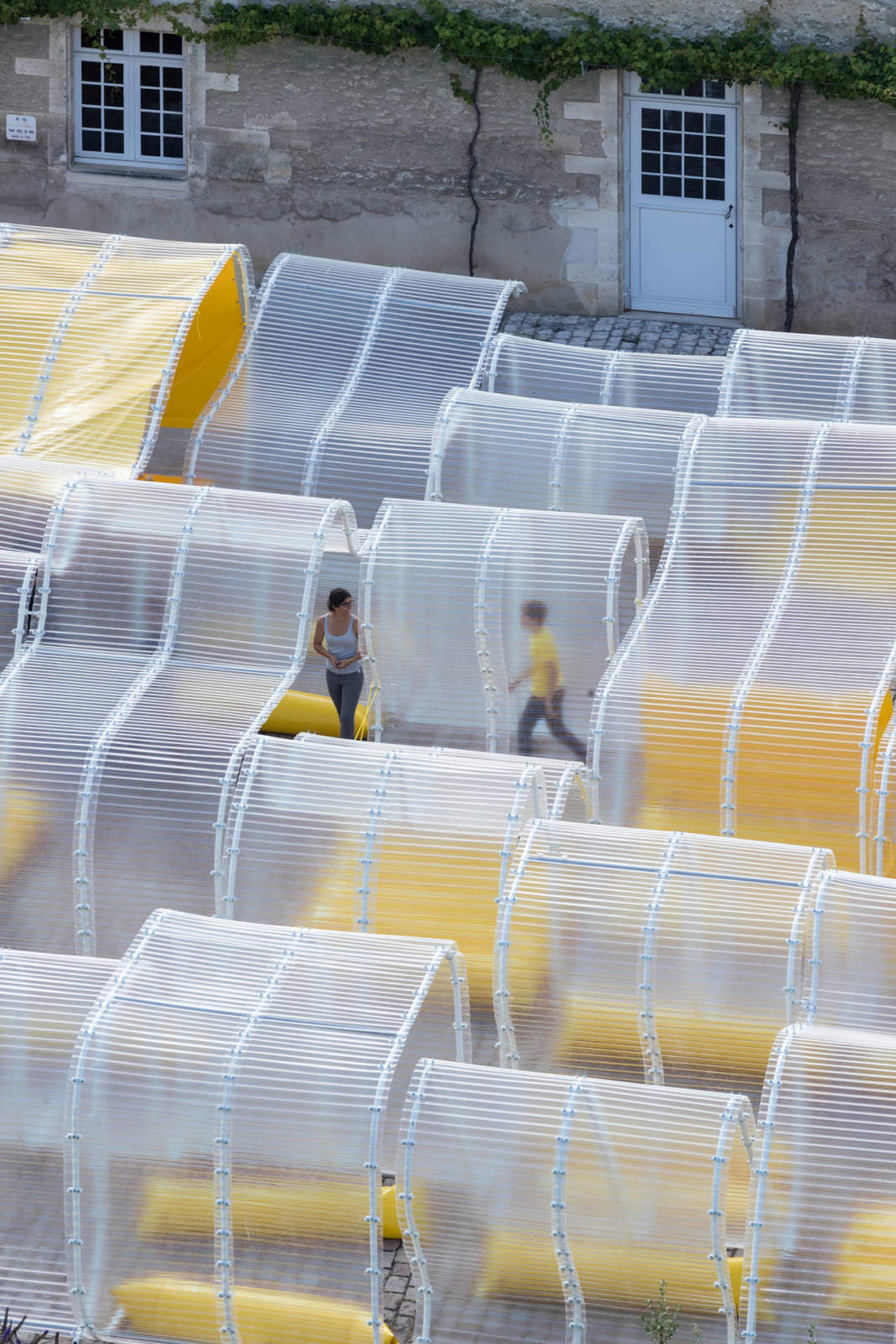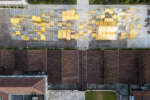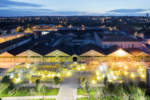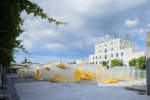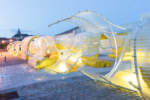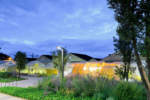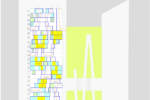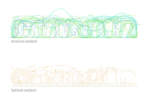architect: SelgasCano
location: Cognac, France
year: 2017
Fondation d’entreprise Martell has inaugurate an in situ commission, an original protean structure created by Spanish architects SelgasCano, which will occupy the entirety of the vast paved courtyard in front of the Foundation until autumn 2018. The first project in France by the duo of Josè Selgas and Lucìa Cano, this exterior pavilion is comprised of modules constructed from hi-tech materials, which will house specific activities prefiguring the Foundation’s future schedule of events. From July 2017, visitors can be able to enjoy creation and performance-based experiences with invited designers including Atelier W110 and 71bis, and artistic partners such as the Abbaye aux Dames. True to their aesthetic of transparency and openness to the outside world, SelgasCano constructed the pavilion from a metal framework covered by a translucent material developed by French brand Onduline. Strong and watertight, the material is permeated by a soft, changing light which creates intriguing iridescent effects.
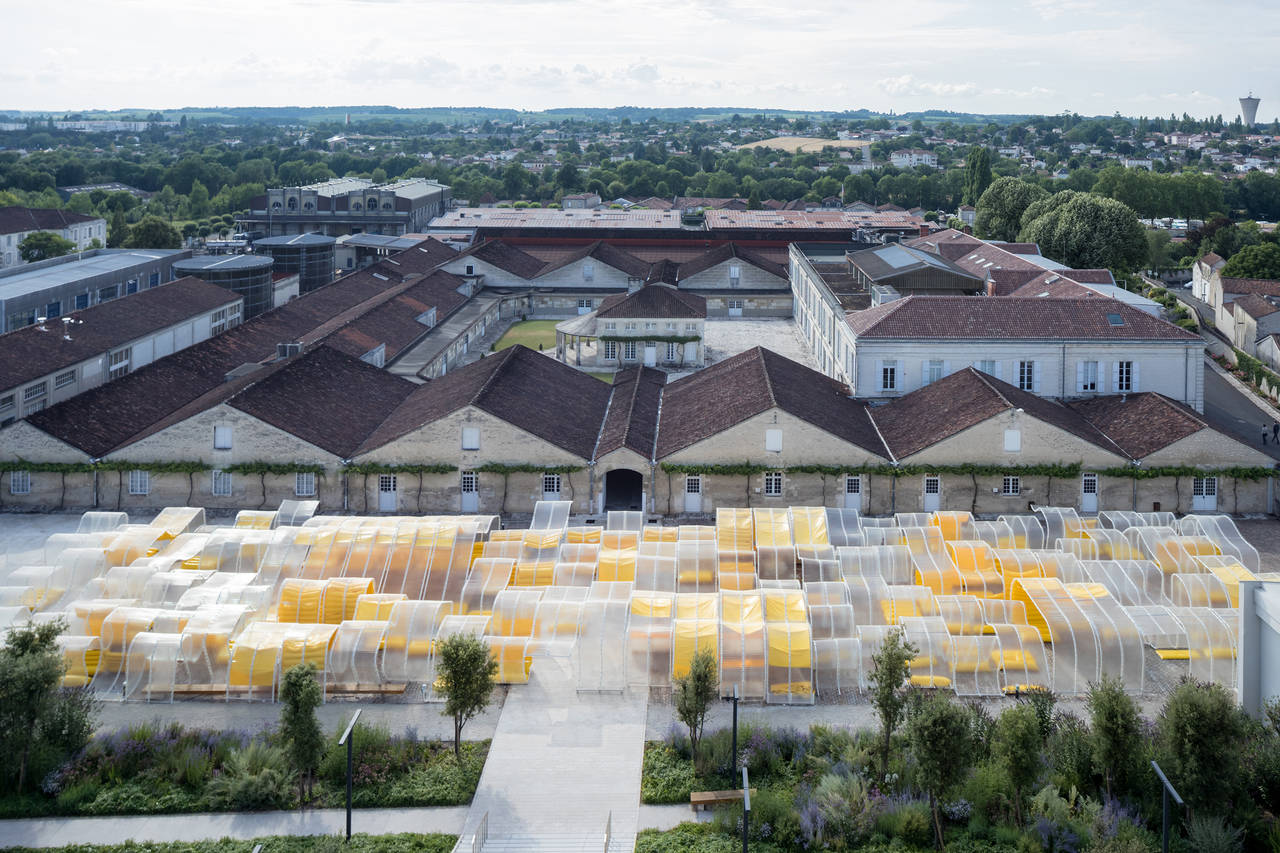
After the installation Par nature by Vincent Lamouroux, the Pavillon Martell de SelgasCano , conceived this time for the exterior of the building, brings a new architectural and international dimension to the Foundation. The rainbow reflections thus created are ideally suited to the architects’ aesthetics. This large pavilion, composed of flexible and organic shapes, is in harmony with environment, the architects defending the idea that "nature must prevail over architecture". The Pavilion also illustrates the transversality of technologies, uses and materials, which is a major focus for future projects developed by the Foundation. Designed to host visitors and events, the Pavillon Martell de SelgasCano brings together a diverse programme centred on activities and themes that prefigure the Fondation d’entreprise Martell’s programming. Inflatable seats installed in the structure, attached by straps, will allow visitors to sit, lean, or stretch out in the context of workshops, concerts, presentations, conferences, markets, games, moments of relaxation, wanderings, etc. The Fondation d’entreprise Martell reaffirms its intention to ensure an eco-responsibility dimension from the initial assembly of the projects to the final destination of the materials. Reusing some of the wood from the previous installation Par nature by Vincent Lamouroux, the Pavillon Martell de SelgasCano will be dismantled in 2018 to be rebuilted elsewhere in order to give it a second life.
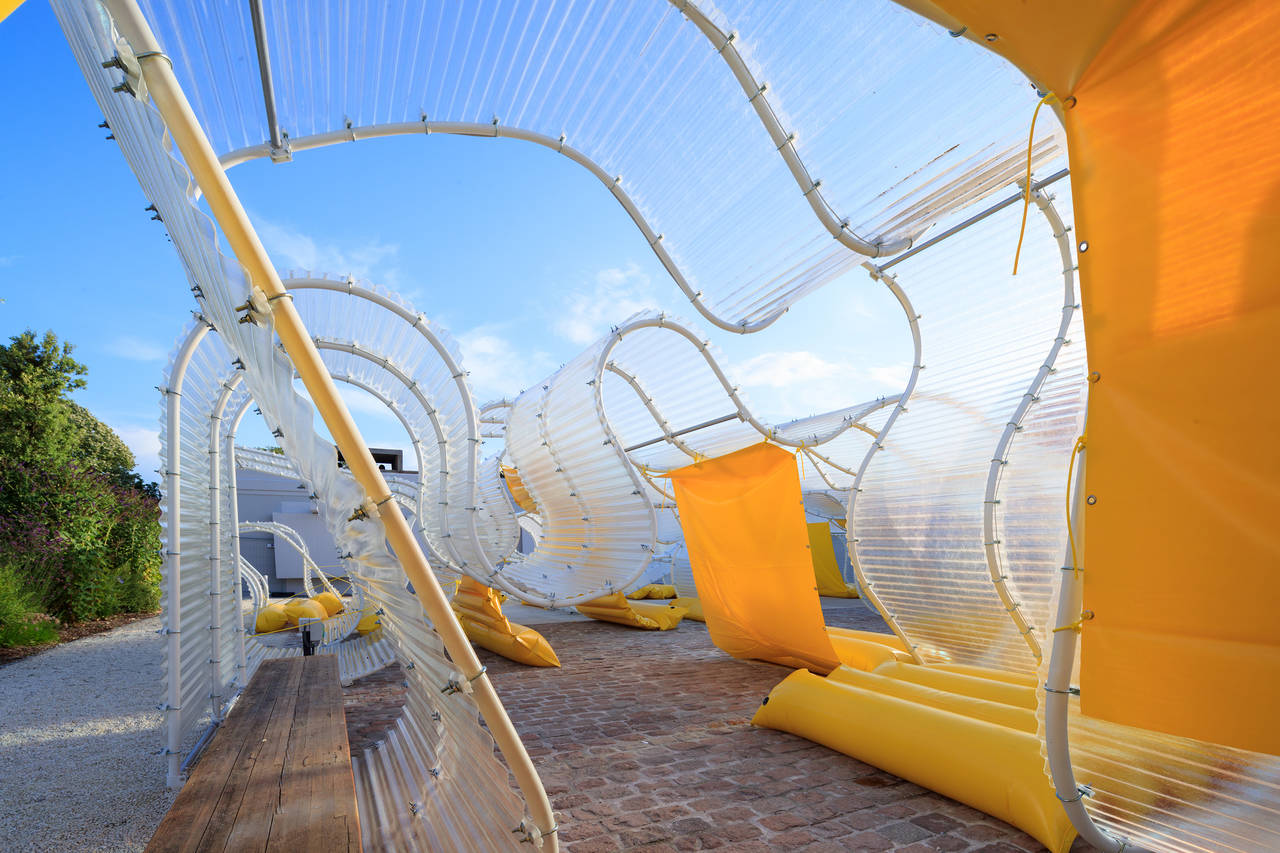
"It is specifically designed for the large dimensions of the space – 26 x 90 metres, or 2,350 m. – which is emblematic of Martell’s long history. We are honoured to be the first architects commissioned to design a temporary installation for this very special site during restoration work on the interior of the building. As this will be the inaugural pavilion, our decisions and directions will impact on subsequent projects. We were given an extensive blank canvas and we wanted to set the tone by occupying the entire site with our pavilion, in the hope of inspiring future artists, architects and designers. The second important decision for us was to work with just one material. Owing to the vast dimensions of the project, the material needed to be accessible and available in large quantities. It also needed to be light, so as to be easy to dismantle and transport to its future location. Moreover, lightness has been a constant and integral aspect of our work, and we saw this project as a unique possibility to experiment and explore that concept further."
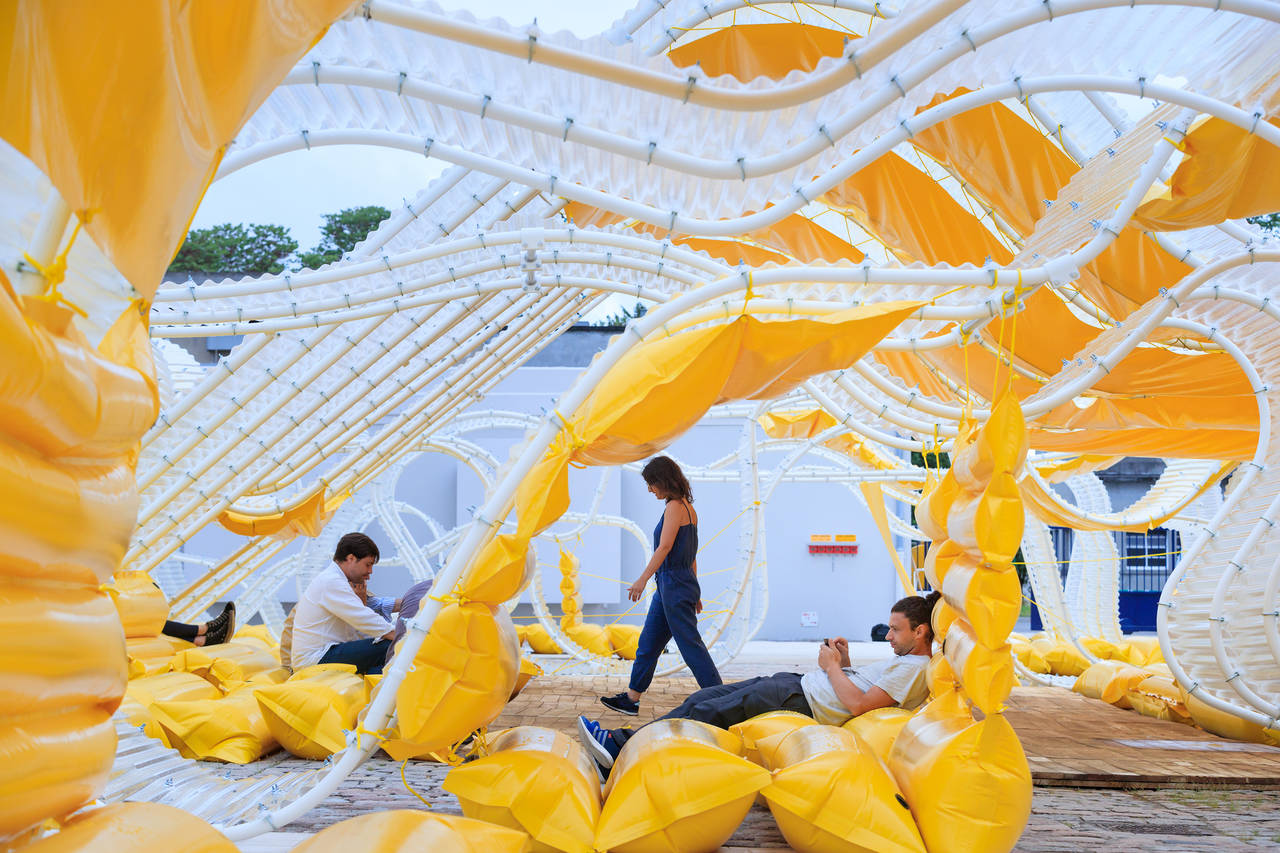
"Another concept we typically like to work with is “off-the-shelf”. We thus started to look for the lightest and most cost-effective materials on the market. We found what we were looking for hidden away in the catalogue of Onduline, a leading French construction company with a worldwide presence. This was a roll, a very thin roll, just 1 mm thick, made with polyester and fibreglass. Its appearance and thinness reminded us of traditional Japanese rice paper. Suddenly, the whole exercise became about discovering a way to work with paper – rice paper, fibreglass paper – and finding a way to play with its shape so as to make it as rigid as possible. We realized that this was a very na.ve and simple process, almost like absentmindedly fiddling with a strip of paper during a meeting, and with this vague pastime we ended up creating a vast paper forest which you could enter, walk around and get lost in. Obviously, when we had to make it real, buildable, we leaned on a couple of additional materials, like steel bars adapted to the paper shape, and – as we couldn’t touch the courtyard floor – we added some yellow cushions filled with water to prevent the paper from blowing away… But we still let it blow a little, in a gentle vibration that perfectly expresses the lightness of the entity."
Selgascano
The architect duo Josè Selgas and Lucìa Cano founded the SelgasCano studio in 1998 in Madrid, Spain. Both born in the Spanish capital in 1965, they studied at the Superior Technical School of Architecture of Madrid, from which they graduated in 1992. Before establishing the SelgasCano firm, Jos. Selgas worked with Francesco Venecia in Naples, winning the Rome Prize of the Spanish Fine Arts Academy in 1997 and 1998. Luc.a Cano, for her part, worked with celebrated Spanish architect Julio Cano Lasso and was a member of his studio until 2003. The study of the processes of construction is at the heart of the studio’s work. SelgasCano endeavours to avoid the use of overly strict representations and creative principles in their constructions. The studio focuses on the pursuit of beauty that is comprehensible for all.
project name: Pavilion Martel
architects: SelgasCano - José Selgas & Lucía Cano
collaborators:
architect: Bárbara Bardin
building enterprise: Lastra&Zorrilla
engineer: IDI ingenieros
client: Fondation Martell
location: Cognac and Africa
completion: June 2017
photographs: Iwan Baan
area: 1340 sqm
dimensions: (17,50 x 76,80) m
maximum height: 4,05 m
number of sections: 31 di 2,40 m wide each one
materials:
- structure: steel tubes. diameter 5 cm. 2844 linear meters
- finish: Onduline in rolls 1,25 m wide. 2370 smq
- furniture and foundation of the pavilion: PVC yellow cushions inflated with air and water. Diameter 40= 314 units - diameter 20= 472 units - tela (wide=2,30 m) = 125 m
- flooring: existing of the square and wood in pointed areaspavimentazione esistente e legno in zone specifiche
mounting process on site: time 370 hours


